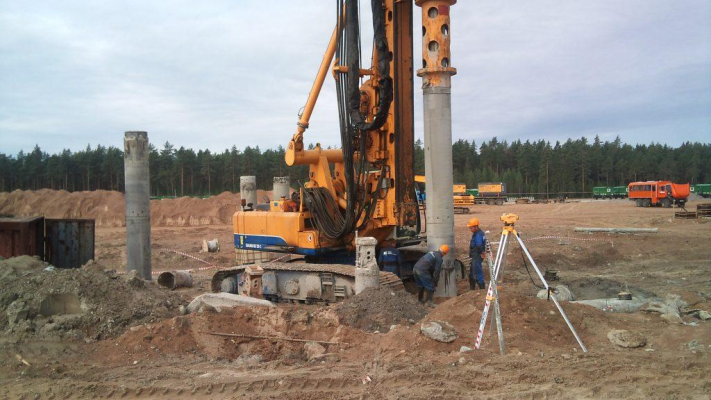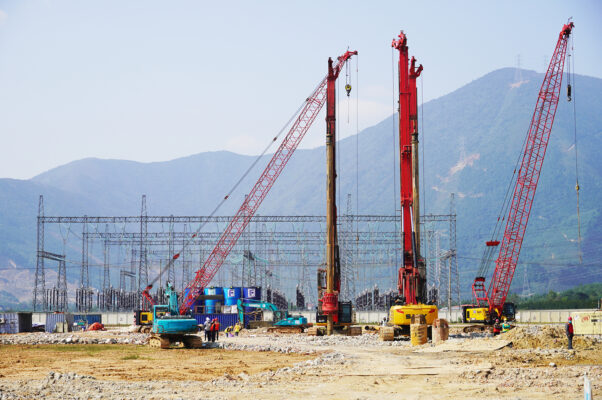In the construction and renovation process, the use of piles to enhance the strength and stability of concrete structures is inevitable. However, a common question that many contractors and engineers encounter is whether to pile before or after concrete. Both methods have their own advantages and disadvantages, and the final decision often depends on various factors.
Piling Before Concrete:
Piling before concrete involves placing precast reinforced concrete piles into the ground before starting construction. This method is common for new constructions, often using piles with standard diameters such as 20×20 and 40×40.
The advantages of this method include convenience as it is done before construction, requiring less material movement and ample workspace. Piling beforehand facilitates easy rectification of issues like subsidence, deviation, or tilting of piles.

Moreover, this method does not generate noise and has minimal impact on surrounding structures. Before implementation, reinforcing the foundation is crucial to ensure long-term quality and durability upon completion. Additionally, thorough geological surveys are essential beforehand to apply suitable construction methods tailored to technical standards and specific site conditions.
The advantages of this method include its versatility for various types of constructions, time-saving during construction, high safety levels, and minimal environmental impact. Moreover, it can be implemented in diverse geological areas, offering flexibility and high economic efficiency.
However, piling before concrete is only suitable for new constructions and is not ideal for repairs or renovations. Additionally, it requires thorough research on contrasts and construction environments.
Piling After Concrete:
Piling after concrete involves placing piles after the construction is completed. This method is typically used when workspace is limited or when the constructed building has caused subsidence, cracks, or tilting. Piles usually have a maximum diameter of 25×25.
This method is quick, cost-effective, and suitable for constructions like narrow townhouses. Notably, it requires fewer bulky machinery; only jacks and supports are needed for pile driving.
Currently, post-concrete piling is widely used for various types of projects, especially for expansions, additional stories, renovations, or foundation reinforcements. It is not only applicable for old structures requiring renovation but also for some new constructions in specific circumstances.
Post-concrete piling can be carried out quickly, requiring minimal equipment and ensuring high safety standards. It can be applied to old, small, narrow constructions without significant environmental impact.
However, the disadvantages of this method include the requirement for highly skilled personnel. The construction process may involve risks of structure cracking. Furthermore, it has limitations in load-bearing capacity and higher costs compared to pre-concrete piling.

Important Considerations for Piling Construction:
For new constructions, careful consideration must be given to preparing the piling location. The area should allow flexibility for pile driving machinery and workers to move without affecting other parts of the construction. The construction process must be carried out meticulously to ensure the piles are placed correctly and meet technical standards.
For repair or expansion projects, post-concrete piling construction must be executed accurately and cautiously. Choosing suitable pile types and ensuring space for machinery and labor are crucial. Careful planning and the use of appropriate reinforcement materials are decisive factors for the long-term strength and stability of the structure.
Whether choosing the pre-concrete or post-concrete piling method, both play a vital role in improving and reinforcing the foundation of construction projects. It is essential to understand the differences between these two methods and consider decisive factors during the construction process. Making the appropriate choice between pre-concrete and post-concrete piling not only ensures the safety and quality of the construction but also demonstrates insight and deep understanding of specific project conditions.


 VN
VN CN
CN KR
KR JP
JP